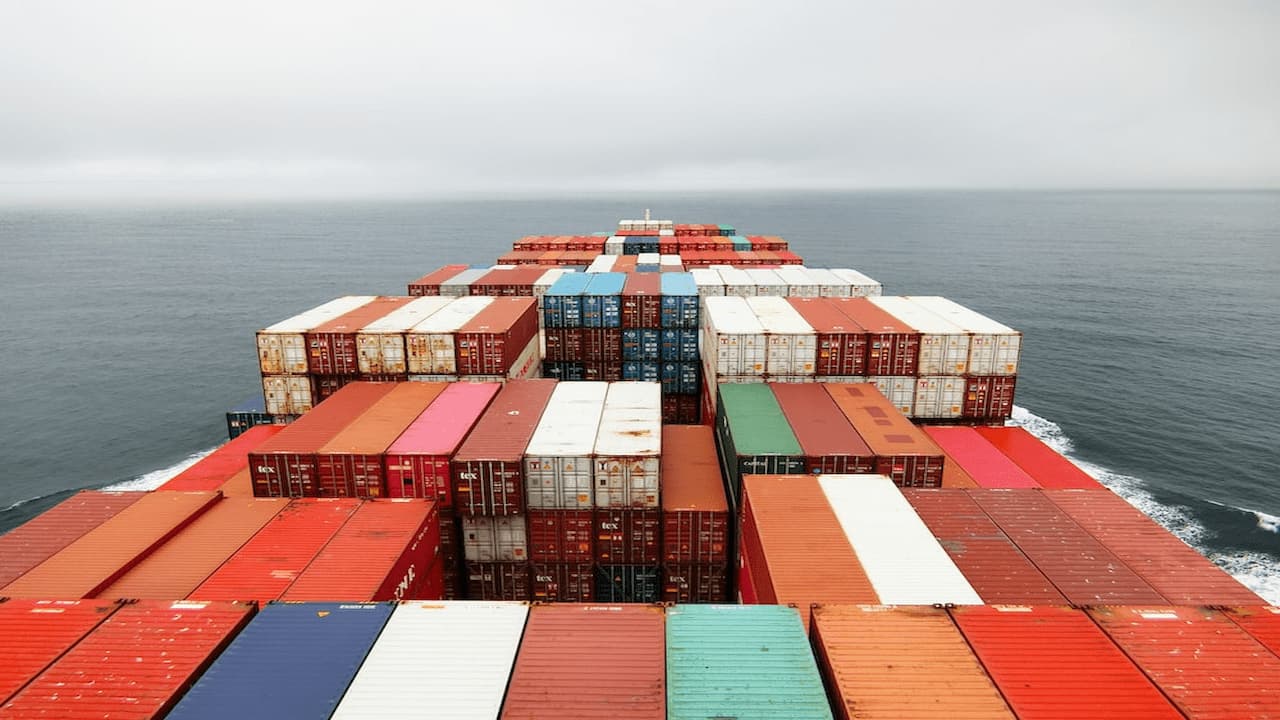Shipping containers have long been an integral component of global trade infrastructure, revolutionizing goods transportation with their efficient, cost-effective and secure movement across borders. This blog will examine their history, significance, advantages, disadvantages and future potential within international trade.
Malcolm McLean first designed modern shipping containers (FCTs) in 1956. Prior to its creation, goods were typically loaded and unloaded manually from ships using break-bulk shipping methods; McLean saw an opportunity for creating an innovative standard shipping container capable of moving rapidly between ships, trucks and trains to significantly decrease loading/unloading time and costs considerably.
The Ideal X was the inaugural container ship to make its inaugural voyage between Newark and Houston in 1956, carrying 58 containers on a landmark voyage that marked an historic first in maritime transport. Within two decades container usage quickly spread around the globe; by 1970 international standards were in place regarding shipping container Sydney sizes and handling equipment to further promote global adoption of this form of shipping.
Shipping containers have long been recognized for their role in international commerce. Their role has increased exponentially due to a variety of reasons, most notably:
1. Efficiency and Speed: Containers have revolutionized loading/unloading procedures by significantly shortening dock time while speeding goods movement speeds.
2. Cost Reduction: Containers’ standard sizes enable more effective space utilization on ships, trucks and trains for transport and handling operations, leading to significant cost reduction in transport and handling operations.
3. Security: Containers provide goods with an accessible yet safe space to reduce theft and damage risks during transport of high-value or fragile items. This feature makes the containers an invaluable aid.
4. Versatility: Containers provide unparalleled versatility in terms of transporting electronics, machinery, food products and textiles – as well as switching modes of transport for multimodal logistics requirements.
5. Global Standardization: Containers have helped foster an international infrastructure of ships, cranes, and storage facilities that facilitate efficient global trade.
Shipping Containers (HCs) provide numerous advantages for cargo transportation.
1. Standardization: The International Organization for Standardization (ISO) has created international container dimensions and construction standards to promote compatibility and interoperability worldwide – such as 20-foot and 40-foot containers.
2. Durability: Containers are built to withstand harsh marine environments, including heavy loads, saltwater corrosion and extreme weather. Their robust durability ensures safe transport over long distances.
3. Versatility: Containers offer unparalleled versatility beyond their primary use in shipping; they can serve as temporary storage, mobile offices or even homes – adding an additional dimension of value and increasing their worth exponentially.
4. Environmental Benefits: Container shipping offers significant environmental advantages over other modes of transport due to its efficient use of resources and lower emissions per unit of cargo transported, making it the more eco-friendly choice.
5. Intermodal Transport: Containers provide seamless intermodal transport by allowing goods to be quickly transferred between ships, trucks and trains without unpacking – thus lowering handling costs as well as damage risks.
Shipping Container Industry Difficulties
Shipping containers offer many benefits, yet their industry must overcome certain unique hurdles to remain successful.
1. Congestion and Capacity Issues: Ports can often experience congestion issues that cause delays and increase costs; these issues worsen with rising global trade volumes, necessitating infrastructure upgrades as well as enhanced management practices to combat them effectively.
2. Environmental Issues: Container shipping can be an efficient means of shipping, but its industry still contributes significantly to greenhouse gas emissions and pollution. With eco-friendly technologies becoming required of them, steps should also be taken to lessen their environmental footprint.
3. Security Threats: Containers provide secure storage environments, yet can also be used to transport illicit substances across borders such as drugs and weapons, making their management challenging when simultaneously moving products efficiently.
4. Technological Advances: Organizations must embrace emerging technologies like automation, blockchain and IoT to remain current across their industries and ensure maximum efficiency, transparency and security for their businesses.
5. Economic Fluctuations: The shipping industry is highly susceptible to global economic conditions; trade wars, economic downturns and fluctuation in demand can all have serious ramifications on its volumes and profits. The Future of Shipping Containers
Shipping containers have become an essential component of international commerce and their growth has been affected by various trends and developments:
1. Sustainability Initiatives: Recently, sustainability initiatives within the shipping industry have gained increased attention. From using more eco-friendly fuels and ships, to recycling old containers, and exploring potential strategies to reduce their environmental footprint.
2. Digitization and Automation: Digitized technologies such as blockchain for secure transactions, the Internet of Things for real-time tracking, and automation for efficient operations are revolutionizing industries by offering greater visibility, reduced costs, and enhanced security.
3. Smart Containers: Equipped with sensors and communication devices, smart containers offer real-time temperature, humidity and location monitoring to provide safer shipping solutions when transporting perishables like food items that spoil quickly or valuable cargo that requires special handling during shipment. They ensure reliable solutions when shipping perishable items that need special handling or require special treatment during transport.
4. Expanded Trade Routes: Thanks to new trade routes like Arctic shipping routes and China’s Belt and Road Initiative providing container shipping companies with opportunities, transit times have significantly been decreased while costs have significantly been reduced, aiding global trade expansion.
5. Infrastructure Investments: In order to relieve congestion and capacity issues, port infrastructure is currently receiving significant investments via expansion projects at existing ports or new port construction – these efforts aim to increase efficiency and capacity across global trade networks.
Shipping containers have revolutionized global trade by providing an efficient, cost-effective and secure means of moving goods globally. Their standardization, durability and versatility have become integral parts of international commerce despite any challenges related to congestion, environmental impacts or sustainability initiatives. As trade volumes expand and new routes emerge – shipping containers will remain integral parts of global logistics networks that facilitate economic development while supporting international commerce.

Ashley Wilson is a blogger who loves to write about various topics including technology, business, digital marketing, food, health, fashion, travel, personal development & more.




